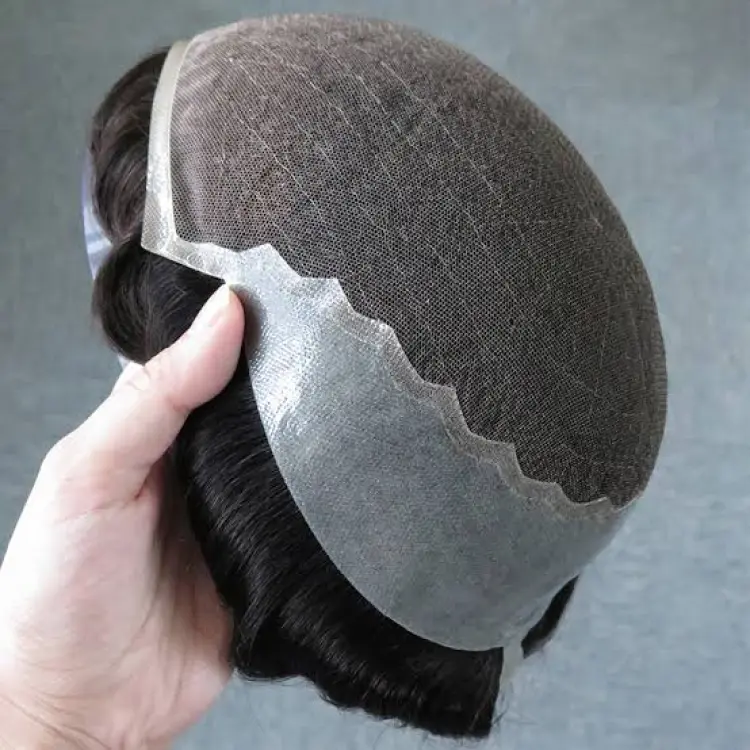Hair loss is a common concern affecting millions of people worldwide. The reasons for hair loss vary from genetics to health conditions to stress, but the result can be a decrease in confidence and self-esteem. Fortunately, hair systems have emerged as a reliable solution for those seeking a non-surgical approach to hair replacement. In this blog post, we’ll cover what hair systems are, how they work, the different types available, and tips for choosing the right one for you.
Table of Contents
ToggleWhat is a Hair System?
A hair system, also known as a hairpiece or toupee, is a custom-made solution that covers areas of hair loss or thinning. It’s designed to blend with your existing hair, providing a natural appearance. Unlike wigs, which cover the entire head, hair systems can be tailored to cover specific areas. They are often used by people experiencing male pattern baldness, alopecia, or other forms of hair loss.
How Do Hair Systems Work?
Hair systems are created using a base material, such as lace or polyurethane, onto which human or synthetic hair is attached. This base is designed to match the color and texture of your scalp to ensure a seamless blend. The hair is then added to the base in a way that mimics natural hair growth patterns.
Once the hair system is ready, it can be attached to the scalp using adhesives or clips. Adhesives provide a secure bond and are often used for more permanent solutions, while clips offer flexibility for easy removal.
If you’re interested in learning more about hair system manufacturing, consider visiting a hair system factory, where you can find a wide range of products and understand the quality standards involved in creating these custom pieces.
Types of Hair Systems
There are various types of hair systems to choose from, each with its unique benefits:
- Lace Systems: Made with a lace base, these systems are lightweight and breathable, allowing for excellent airflow. They are typically favored for their natural look and feel.
- Polyurethane Systems: These systems use a thin, transparent material that mimics the scalp’s appearance. They are known for their durability and ease of cleaning.
- Monofilament Systems: Constructed with a fine mesh base, these systems offer a natural look and can be styled in various ways. They are often used in high-quality hair systems.
- Combination Systems: These systems combine elements of lace, polyurethane, and monofilament to provide the benefits of each type. They offer flexibility and comfort.
Tips for Choosing the Right Hair System
Selecting a hair system can be overwhelming due to the numerous options available. Here are some essential tips to guide your choice:
- Consider Your Lifestyle: If you lead an active lifestyle or live in a humid climate, opt for a system that offers breathability and durability.
- Find the Right Fit: Custom-made hair systems are designed to fit your scalp perfectly, so ensure you get accurate measurements before purchasing.
- Select the Appropriate Hair Type: You can choose between human hair and synthetic hair. Human hair offers a more natural look but requires more maintenance. Synthetic hair is more durable and easier to care for.
- Consult a Professional: Seek advice from a hair system expert to help you select the best system for your needs. They can also assist with installation and maintenance.
Maintenance and Care for Hair Systems
To ensure your hair system lasts as long as possible, proper care and maintenance are essential. Here are some general tips:
- Cleaning: Clean your hair system regularly with a gentle shampoo and conditioner. Avoid harsh chemicals that could damage the hair or the base material.
- Styling: Use low-heat styling tools to avoid damaging the hair. Be gentle when brushing to prevent hair loss from the system.
- Storage: When not in use, store your hair system in a cool, dry place. Use a wig stand or similar support to maintain its shape.
- Regular Adjustments: Hair systems may require occasional adjustments to ensure a secure fit. Visit a professional for regular maintenance and repairs.
By following these tips, you can enjoy a natural-looking hair system that enhances your appearance and boosts your confidence.
Conclusion
Hair systems are a versatile solution for those experiencing hair loss. Whether you choose a lace system for its natural feel or a polyurethane system for its durability, there’s a wide variety of options available. When selecting a hair system, consider your lifestyle, the type of hair, and the level of maintenance required. With proper care, your hair system can be a long-lasting and effective solution for hair loss.



